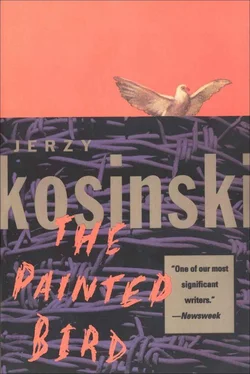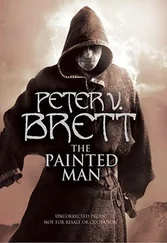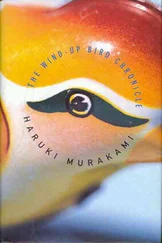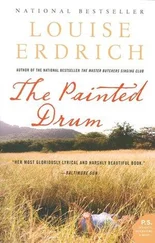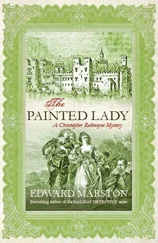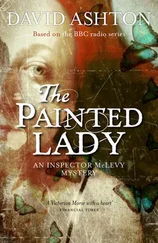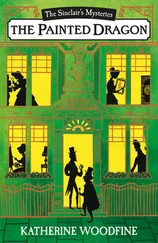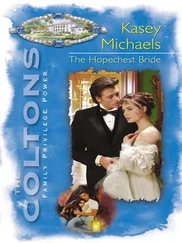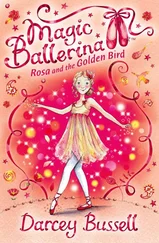Jerzy Kosiński - The Painted Bird
Здесь есть возможность читать онлайн «Jerzy Kosiński - The Painted Bird» весь текст электронной книги совершенно бесплатно (целиком полную версию без сокращений). В некоторых случаях можно слушать аудио, скачать через торрент в формате fb2 и присутствует краткое содержание. Год выпуска: 1965, ISBN: 1965, Жанр: Детская проза, на английском языке. Описание произведения, (предисловие) а так же отзывы посетителей доступны на портале библиотеки ЛибКат.
- Название:The Painted Bird
- Автор:
- Жанр:
- Год:1965
- ISBN:978-0-8021-9575-3
- Рейтинг книги:4 / 5. Голосов: 1
-
Избранное:Добавить в избранное
- Отзывы:
-
Ваша оценка:
- 80
- 1
- 2
- 3
- 4
- 5
The Painted Bird: краткое содержание, описание и аннотация
Предлагаем к чтению аннотацию, описание, краткое содержание или предисловие (зависит от того, что написал сам автор книги «The Painted Bird»). Если вы не нашли необходимую информацию о книге — напишите в комментариях, мы постараемся отыскать её.
The Painted Bird — читать онлайн бесплатно полную книгу (весь текст) целиком
Ниже представлен текст книги, разбитый по страницам. Система сохранения места последней прочитанной страницы, позволяет с удобством читать онлайн бесплатно книгу «The Painted Bird», без необходимости каждый раз заново искать на чём Вы остановились. Поставьте закладку, и сможете в любой момент перейти на страницу, на которой закончили чтение.
Интервал:
Закладка:
When I had come to America six years before this European visit, I was determined never again to set foot in the country where I had spent the war years. That I had survived was due solely to chance, and I had always been acutely aware that hundreds of thousands of other children had been condemned. But although I felt strongly about that injustice, I did not perceive myself as a vendor of personal guilt and private reminiscences, nor as a chronicler of the disaster that befell my people and my generation, but purely as a storyteller.
“. . . the truth is the only thing in which people do not differ. Everyone is subconsciously mastered by the spiritual will to live, by the aspiration to live at any cost; one wants to live because one lives, because the whole world lives . . .” wrote a Jewish concentration camp inmate shortly before his death in the gas chamber. “We are here in the company of death,” wrote another inmate. “They tattoo the newcomers. Everyone gets his number. From that moment on you have lost your ‘self and have become transformed into a number. You no longer are what you were before, but a worthless moving number . . . We are approaching our new graves . . . iron discipline reigns here in the camp of death. Our brain has grown dull, the thoughts are numbered: it is not possible to grasp this new language . . .”
My purpose in writing a novel was to examine “this new language” of brutality and its consequent new counter-language of anguish and despair. The book would be written in English, in which I had already written two works of social psychology, having relinquished my mother tongue when I abandoned my homeland. Moreover, as English was still new to me, I could write dispassionately, free from the emotional connotation one’s native language always contains.
As the story began to evolve, I realized that I wanted to extend certain themes, modulating them through a series of five novels. This five-book cycle would present archetypal aspects of the individual’s relationship to society. The first book of the cycle was to deal with the most universally accessible of these societal metaphors: man would be portrayed in his most vulnerable state, as a child, and society in its most deadly form, in a state of war. I hoped the confrontation between the defenseless individual and overpowering society, between the child and war, would represent the essential anti-human condition.
Furthermore, it seemed to me, novels about childhood demand the ultimate act of imaginative involvement. Since we have no direct access to that most sensitive, earliest period of our lives, we must recreate it before we can begin to assess our present selves. Although all novels force us into such an act of transference, making us experience ourselves as different beings, it is generally more difficult to imagine ourselves as children than as adults.
As I began to write, I recalled The Birds, the satirical play by Aristophanes. His protagonists, based on important citizens of ancient Athens, were made anonymous in an idyllic natural realm, “a land of easy and fair rest, where man can sleep safely and grow feathers.” I was struck by the pertinence and universality of the setting Aristophanes had provided more than two millennia ago.
Aristophanes’ symbolic use of birds, which allowed him to deal with actual events and characters without the restrictions which the writing of history imposes, seemed particularly appropriate, as I associated it with a peasant custom I had witnessed during my childhood. One of the villagers’ favorite entertainments was trapping birds, painting their feathers, then releasing them to rejoin their flock. As these brightly colored creatures sought the safety of their fellows, the other birds, seeing them as threatening aliens, attacked and tore at the outcasts until they killed them. I decided I too would set my work in a mythic domain, in the timeless fictive present, unrestrained by geography or history. My novel would be called The Painted Bird.
Because I saw myself solely as a storyteller, the first edition of The Painted Bird carried only minimal information about me and I refused to give any interviews. Yet this very stand placed me in a position of conflict. Well-intentioned writers, critics, and readers sought facts to back up their claims that the novel was autobiographical. They wanted to cast me in the role of spokesman for my generation, especially for those who had survived the war; but for me survival was an individual action that earned the survivor the right to speak only for himself. Facts about my life and my origins, I felt, should not be used to test the book’s authenticity, any more than they should be used to encourage readers to read The Painted Bird.
Furthermore, I felt then, as I do now, that fiction and autobiography are very different modes. Autobiography emphasizes a single life: the reader is invited to become the observer of another man’s existence and encouraged to compare his own life to the subject’s. A fictional life, on the other hand, forces the reader to contribute: he does not simply compare; he actually enters a fictional role, expanding it in terms of his own experience, his own creative and imaginative powers.
I remained determined that the novel’s life be independent of mine. I objected when many foreign publishers refused to issue The Painted Bird without including, as a preface or as an epilogue, excerpts from my personal correspondence with one of my first foreign-language publishers. They hoped that these excerpts would soften the book’s impact. I had written these letters in order to explain, rather than mitigate, the novel’s vision; thrust between the book and its readers, they violated the novel’s integrity, interjecting my immediate presence into a work intended to stand by itself. The paperback version of The Painted Bird, which followed a year after the original, contained no biographical information at all. Perhaps it was because of this that many school reading lists placed Kosinski not among contemporary writers, but among the deceased.
*
After The Painted Bird’s publication in the United States and in Western Europe (it was never published in my homeland, nor allowed across its borders), certain East European newspapers and magazines launched a campaign against it. Despite their ideological differences, many journals attacked the same passages from the novel (usually quoted out of context) and altered sequences to support their accusations. Outraged editorials in State-controlled publications charged that American authorities had assigned me to write The Painted Bird for covert political purposes. These publications, ostensibly unaware that every book published in the United States must be registered by the Library of Congress, even cited the Library catalogue number as conclusive evidence that the United States government had subsidized the book. Conversely, the anti-Soviet periodicals singled out the positive light in which, they claimed, I had portrayed the Russian soldiers, as proof that the book attempted to justify the Soviet presence in Eastern Europe.
Most Eastern European condemnation focused on the novel’s alleged specificity. Although I had made sure that the names of people and places I used could not be associated exclusively with any national group, my critics accused The Painted Bird of being a libelous documentary of life in identifiable communities during the Second World War. Some detractors even insisted that my references to folklore and native customs, so brazenly detailed, were caricatures of their particular home provinces. Still others attacked the novel for distorting native lore, for defaming the peasant character, and for reinforcing the propaganda weapons of the region’s enemies.
Читать дальшеИнтервал:
Закладка:
Похожие книги на «The Painted Bird»
Представляем Вашему вниманию похожие книги на «The Painted Bird» списком для выбора. Мы отобрали схожую по названию и смыслу литературу в надежде предоставить читателям больше вариантов отыскать новые, интересные, ещё непрочитанные произведения.
Обсуждение, отзывы о книге «The Painted Bird» и просто собственные мнения читателей. Оставьте ваши комментарии, напишите, что Вы думаете о произведении, его смысле или главных героях. Укажите что конкретно понравилось, а что нет, и почему Вы так считаете.
